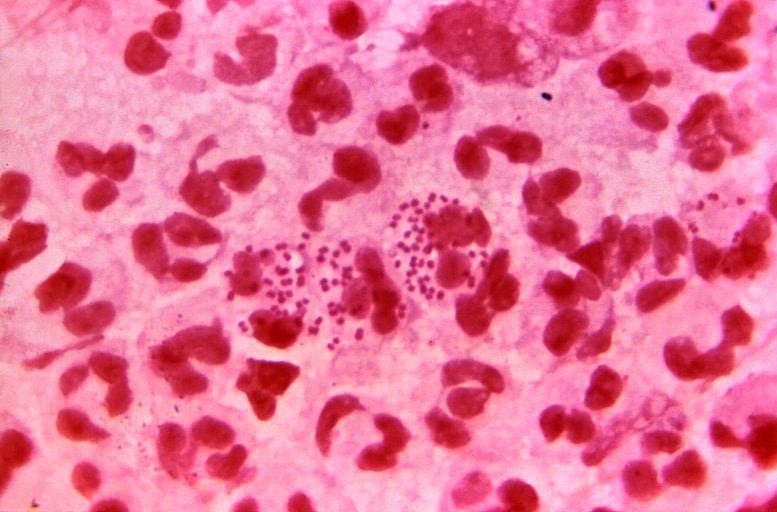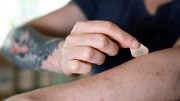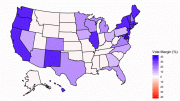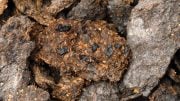
This photomicrograph of a Gram-stained specimen, revealed the presence of intracellular, Gram-negative, Neisseria gonorrhoeae diplococcal bacteria, amongst numerous white blood cells (WBCs), known as polymorphonuclear leukocytes, or PMNs. Credit: CDC/Bill Schwartz
The most common STIs in the USA, chlamydia and gonorrhea, are usually easy to eradicate thanks to doses of oral antibiotics, but now gonorrhea is getting more resistant to first-line defense drugs.
The scientists published their findings in The Journal of the American Medical Association. There are more than 321,000 cases of gonorrhea reported each year in the USA and the actual number infected may be a lot higher because many people do not suffer from symptoms. The infection has also lost much of its social stigma, but left untreated it can cause pelvic inflammation, severe pregnancy complications, and female infertility. Its presence also increases the odds of HIV infection, and babies born to women with untreated gonorrhea risk blindness.
Although antibiotics have reduced this infection to an inconvenience, Neisseria gonorrhoeae has been evolving steadily, becoming drug-resistant. Sulfonamides ceased to be effective in the 1940s. Penicillins and tetracyclines lost their effectiveness in the 1970s and 80s and fluoroquinolones were inadequate in 2007. And now the last treatment available, a class of antibiotics called cephalosporins, appears to be weakening against gonorrhea infections worldwide. According to the new study, this drug resistance has now reached North America in sizable numbers.
A few years ago, in Japan, it was first noted that gonorrhea was becoming resistant to a cephalosporin antibiotic. Since then, the phenomenon has spread to Europe and North America.
In this new study, patients were examined at a clinic in Toronto, Canada. The researchers were able to gather data on how often the drugs failed to work. Out of 133 patients who received the treatment and returned for their follow-up appointments for testing, 6.77%, or about 1 in 15, failed to respond to the treatment. There are no effective backup treatment options currently available.
The CDC has recommended clinicians no longer prescribe a single antibiotic treatment. Instead, they should receive an injection of ceftriaxone as well as a week-long course of oral azithromycin or doxycycline.
Reference: “Neisseria gonorrhoeae Treatment Failure and Susceptibility to Cefixime in Toronto, Canada” by Vanessa G. Allen, MD, MPH; Leo Mitterni; Christine Seah, MLT; Anuradha Rebbapragada, PhD; Irene E. Martin, BSc; Colin Lee, MD; Heather Siebert, MLT; Lynn Towns, MLT; Roberto G. Melano, PhD and Donald E. Low, MD, 9 January 2013, JAMA.
DOI: 10.1001/jama.2012.176575









Be the first to comment on "Drug Resistant Gonorrhea on the Rise in North America"